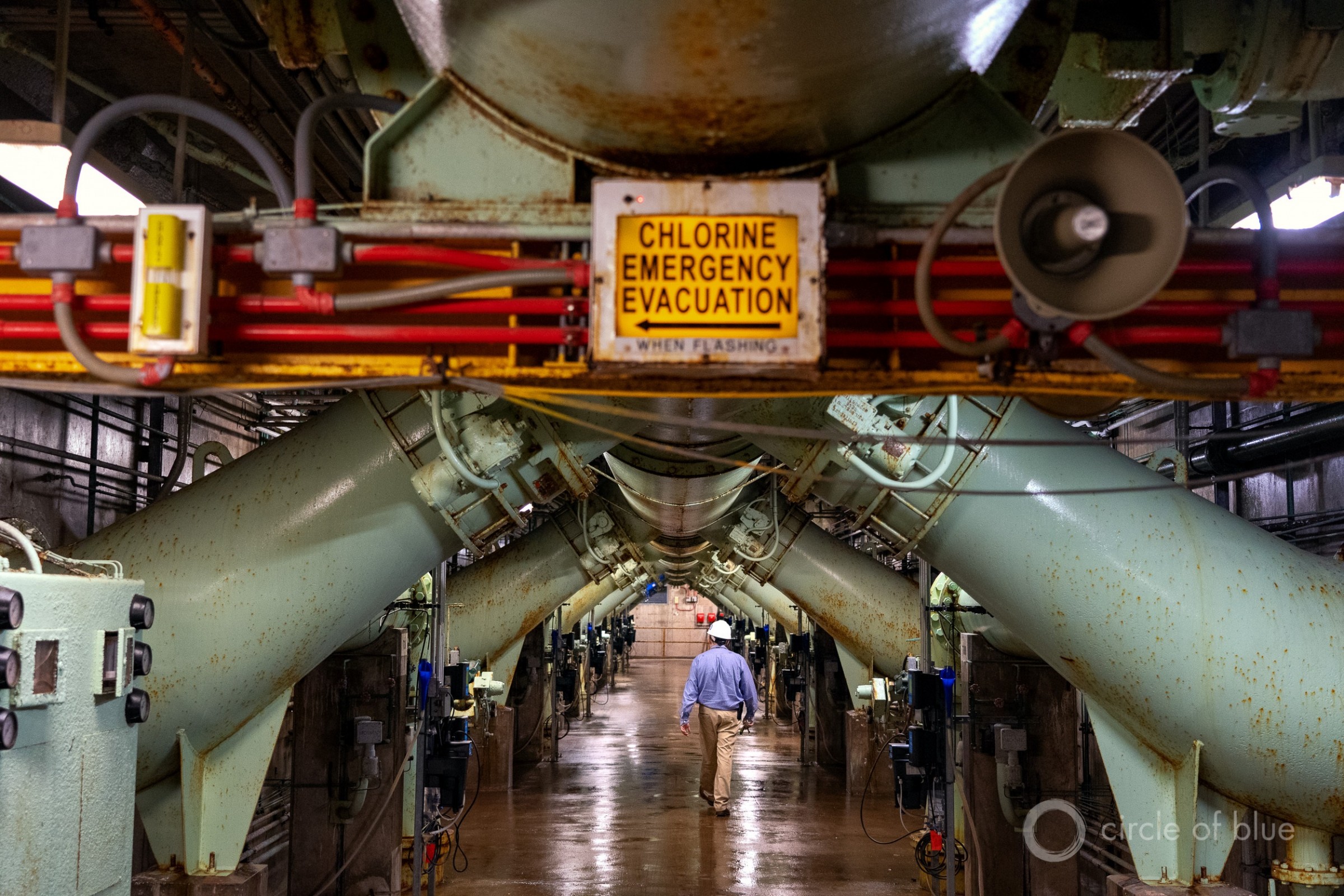CDC Estimates Costs of Waterborne Pathogens in the United States
Healthcare cost of infectious waterborne disease in the United States tops $3.3 billion, and more than 6,600 deaths are linked to illnesses spread by water, the CDC finds.

Adding chlorine disinfection to centralized water treatment plants like Chicago’s Jardine Purification Plant contributed to a substantial decline in waterborne disease outbreaks associated with those facilities. Now, the bigger strain on the health system from waterborne disease are illnesses that arise from pathogens that grow within building plumbing. Photo © Alex Garcia/Circle of Blue
By Brett Walton, Circle of Blue
Contaminated water is making U.S. residents sick — millions of them each year.
Though this tally includes summertime nuisances like swimmer’s ear, the most costly and deadliest risks are the microbes that grow within building plumbing or in rivers and lakes, according to a study from the federal government’s top health agency.
The Centers for Disease Control and Prevention estimates that some 7.2 million cases of waterborne disease were recorded in the country in 2014.
Of those cases, about 601,000 required an emergency room visit and 118,000 resulted in hospitalization. The cost of those trips to the doctor added up, amounting to about $3.3 billion.
In total, there were about 6,600 deaths attributed to the 17 diseases in the analysis, which will appear in the January 2021 edition of Emerging Infectious Diseases, a peer-reviewed journal published by the CDC.
Though most cases of waterborne infectious disease were swimmer’s ear or intestinal illness, most hospitalizations and deaths were caused by emerging threats: pathogens like Legionella, Pseudomonas, and nontuberculous mycobacteria that grow inside building plumbing and other elements of the water distribution system.
Sarah Collier, the lead author on the study, said that the data “highlights the expanding role of environmental pathogens” as contributors of waterborne disease. These include Legionella, which is responsible for Legionnaires’ disease, a pneumonia-like ailment that is the country’s deadliest waterborne disease.
Seventy-two percent of healthcare costs in the study, or $2.4 billion, were attributed to respiratory illnesses like Legionnaires’ and nontuberculous mycobacteria infections.
The study is the most comprehensive estimate of the infectious waterborne disease burden in the country. It takes into account the three main exposure pathways: mouth, nose, and skin. It incorporates exposures through drinking water systems and plumbing features, as well as those that occurred while playing in lakes and rivers. Health costs were derived from insurance billing data and out-of-pocket payments.
Though it is the most extensive analysis to date, the cost of the country’s water contamination is far higher than the numbers cited in the study.
Why? The CDC analysis considered pathogens that are largely transmitted through water. Legionnaires’ disease was included, because the bacteria cling to aerosolized water droplets. Malaria was not, because even though standing water increases the risk of disease, mosquitoes are the carrier. Algal toxins were not considered. Neither were chemical contaminants like arsenic, nitrate, PFAS, and lead.
Those contaminants are associated with cancers, immune system malfunctions, and brain impairment. Costs — in dollars and lives — that are substantial, but unaccounted for in this review.
Brett writes about agriculture, energy, infrastructure, and the politics and economics of water in the United States. He also writes the Federal Water Tap, Circle of Blue’s weekly digest of U.S. government water news. He is the winner of two Society of Environmental Journalists reporting awards, one of the top honors in American environmental journalism: first place for explanatory reporting for a series on septic system pollution in the United States(2016) and third place for beat reporting in a small market (2014). He received the Sierra Club’s Distinguished Service Award in 2018. Brett lives in Seattle, where he hikes the mountains and bakes pies. Contact Brett Walton












Leave a Reply
Want to join the discussion?Feel free to contribute!